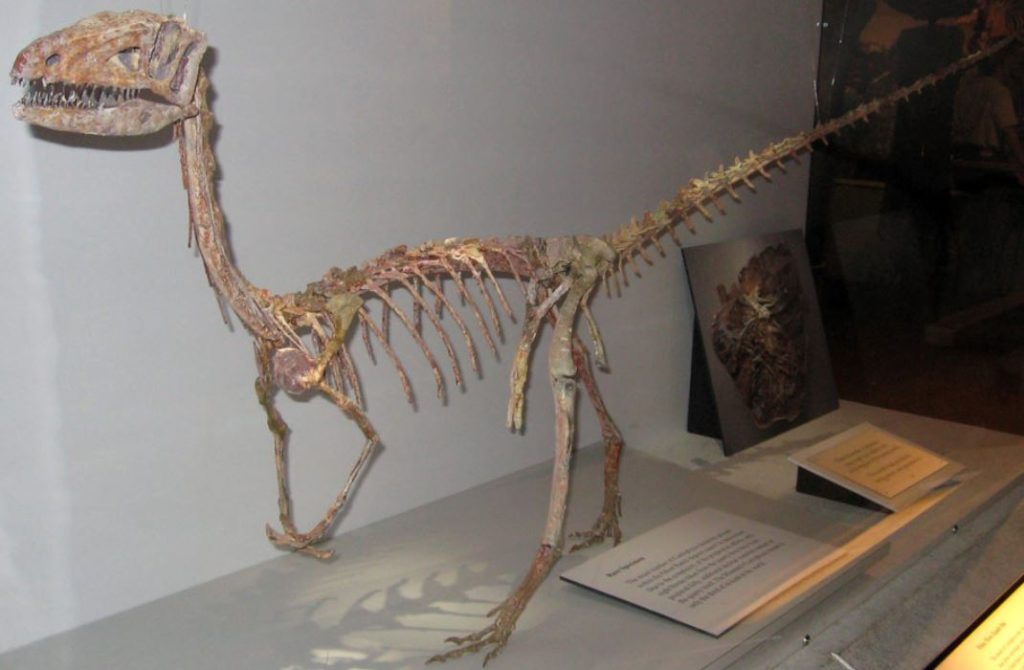Coelophysis Dinosaur: An Illustrated Deep Dive into One of the Earliest Dinosaurs Known to Man…
Coelophysis Dinosaur Fast Facts
Dinosaur Category: Theropod
Belonging to Family: Coelophysidae
Name Interpretation: hollow structure
Existed: Approximately between 221.5 and 190 million years ago
Era: Late Triassic Fossil
Locations: Predominantly North America
Size: 2 – 3 meters / 6.56 – 9.84 feet
Weight: Between 15 and 25 kilograms / 33.07 – 55.12 pounds
Behaviors and Habits: Predatory, subsisted on insects and small vertebrates
Identifying Species: Coelophysis bauri
Noteworthy Fact: Coelophysis has been honored as the official state fossil of New Mexico
Introduction to Coelophysis
The Coelophysis was a small theropod dinosaur that was native to areas of modern-day North America and Southern Africa during the late Triassic period. It is believed to have emerged around 221.5 million years ago, which positions it among the earliest-known dinosaurs. The Coelophysis was a small, nimble creature that lived on the ground and was likely an insectivore and predator of small vertebrates.
This dinosaur was first discovered in the Late Triassic layers of the Chinle Formation, located in the northwestern parts of New Mexico.

Coelophysis Physical Description & Distinguishing Features
Coelophysis is known for its characteristic bipedal posture, a common trait of all theropods, which means it walked on two legs.
The Coelophysis dinosaur had three main claws on each foot, along with a fourth, smaller claw located higher up. Its arms were not particularly strong, but they were useful for grabbing and holding onto prey. The dinosaur had a slender head and its jaws were lined with approximately 50 petite, sharp teeth.
Key features also include large, forward-facing eyes, implying the ability for binocular vision (useful for judging depth), which serves as strong evidence of its predatory nature.

The Meaning Behind the Name Coelophysis
The name “Coelophysis” translates to “hollow form,” which references the hollow vertebrae in its skeletal structure, a common feature among theropod dinosaurs, including birds.
Size Details for Coelophysis
The Coelophysis dinosaur ranged in length from 2 to 3 meters (6.56 to 9.84 feet) and weighed approximately between 15 to 25 kilograms (33.07 to 55.12 pounds). At the hip, it stood about 1 meter (3.28 feet) tall.
Diet of the Coelophysis Dinosaur
Coelophysis’ light build suggests it was a swift and agile predator. Paleontologists infer from its slender arms, small teeth, and nimble physique that Coelophysis likely specialized in catching small, quick, and highly maneuverable prey. There’s also evidence that suggests the dinosaur was a daytime hunter that primarily relied on sight, akin to modern-day birds and reptiles.
Is Coelophysis Considered Cannibalistic?
Past discoveries of what were presumed to be juvenile Coelophysis remains inside the body cavities of two adult Coelophysis led to suspicions of cannibalistic behavior. However, further analysis revealed these remains to be of early crocodylomorphs, not juvenile Coelophysis.
Timeframe of Coelophysis Existence
The Coelophysis dinosaur roamed the earth roughly from 220 to 183 million years ago during the Late Cretaceous period.
Discover More: Triassic Period Dinosaurs and Triassic Period Animals
The World and Fellow Dinosaurs of Coelophysis
Coelophysis was among the pioneers of the dinosaur kingdom. Its world was not predominantly populated by other dinosaurs, but by non-dinosaur archosaurs and creatures resembling the ancestors of mammals.
Despite its predatory lifestyle, Coelophysis was not an apex predator. Its nimbleness and speed were likely advantageous for hunting prey and also for escaping larger predators.
Coelophysis had to avoid meat-eaters like the crocodile-like Phytosaurs and the formidable rauisuchid Postosuchus.
It shared its habitat with a variety of creatures, including the archosaur Effigia, the large plant-eating dicynodont Placerias, and Thrinaxodon, a carnivorous cynodont about the size of a modern-day dog.
Unearthed Fossils and Locations
The initial discovery of Coelophysis fossils took place in 1881 within the Chinle formation rocks in northwestern New Mexico, a Late Triassic rock layer spanning Nevada, Utah, Arizona, New Mexico, and Colorado.
Famed paleontologist Edward Drinker Cope’s fossil collector, David Baldwin, made this discovery. Initially, Cope mistakenly categorized them under existing genera but later acknowledged that these fossils represented a new genus, which he named Coelophysis, due to the hollow nature of the vertebrae.

In 1947, paleontologist Edwin Colbert embarked on a fossil excavation expedition to Ghost Ranch, a vast ranch near the original discovery location. He stumbled upon a “graveyard” filled with hundreds of Coelophysis fossils, likely the result of a flash flood causing mass burial. The discovery included both juvenile and adult specimens of both sexes, providing invaluable insights into the life of the Coelophysis.
In addition to these significant finds in New Mexico, a smaller “Coelophysis graveyard” was discovered in Zimbabwe.
Classification of the Coelophysis Dinosaur
Coelophysis is one of the earliest-known representatives of the theropod dinosaurs and is a member of the Coelophysidae family, which also includes genera like Camposaurus, Procompsognathus, and Segisaurus.
Coelophysis’ Journey to Space
Coelophysis holds the honor of being the second dinosaur to venture into space, following the Maiasaura. A Coelophysis skull was taken aboard the space station Mir during a mission conducted by the Space Shuttle Endeavour in 1998.
